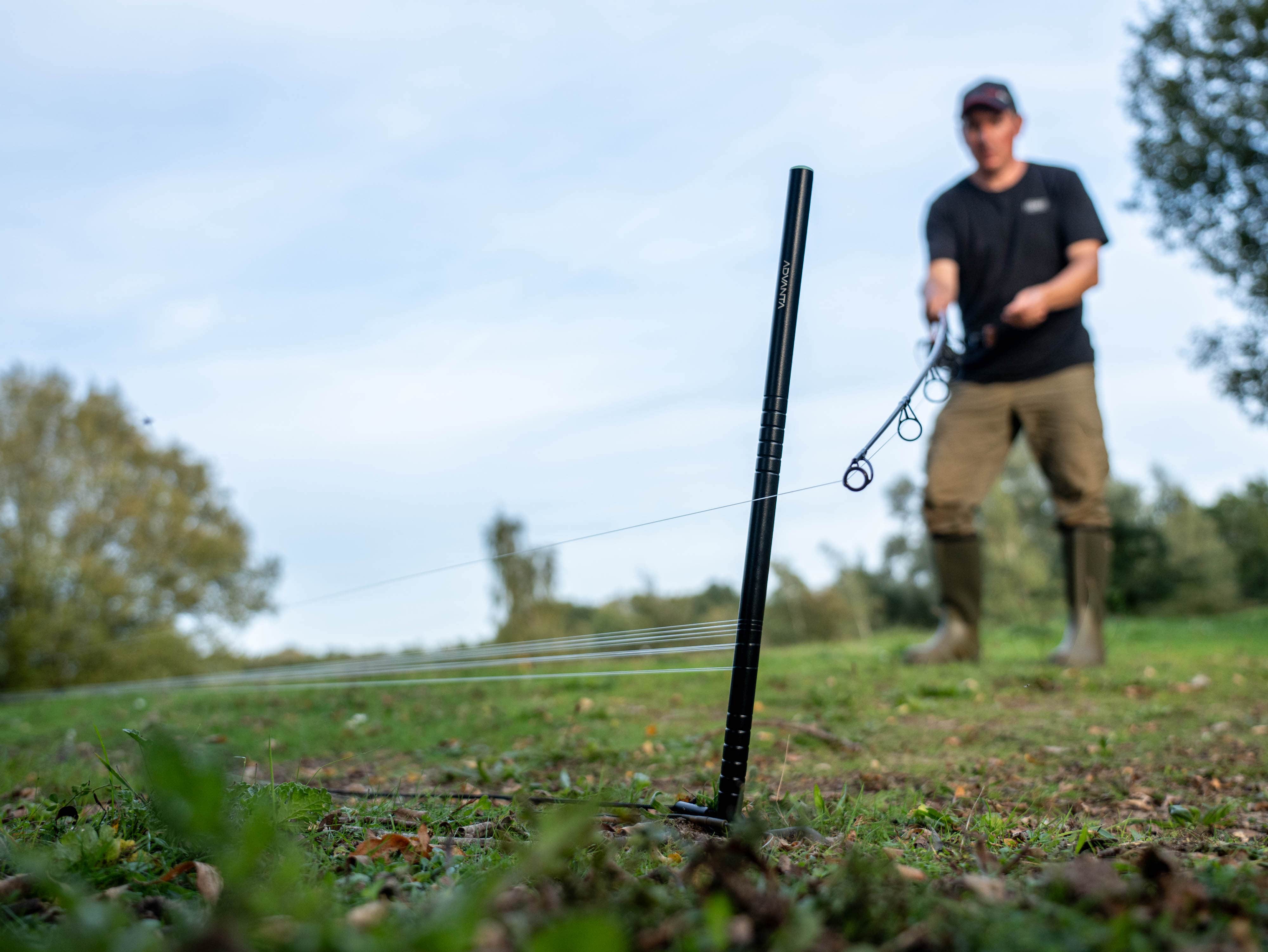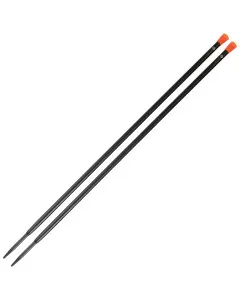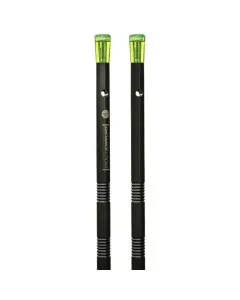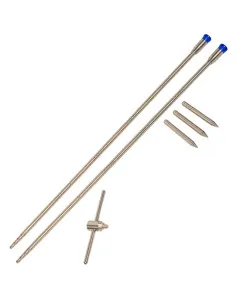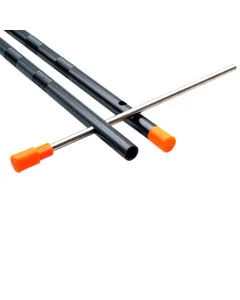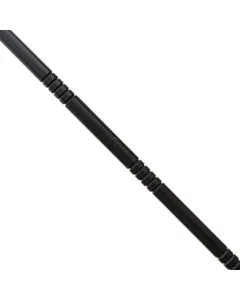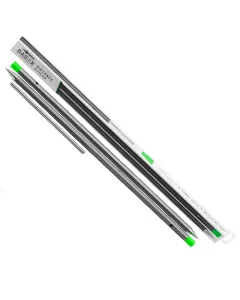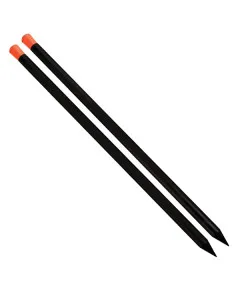How To Use Distance Sticks for Fishing
In the intricate art of angling, casting your line accurately over long distances is a skill that distinguishes seasoned anglers. Yet, even the most experienced can find this task challenging.
This is where distance sticks come into play, changing the way we approach distance fishing. These simple tools, when used correctly, can significantly enhance the precision of your casts and bait placements.
In this article, we delve into the world of distance sticks for carp fishing, exploring their importance in achieving accuracy. Providing a guide on how to effectively use them to turn the vast and unpredictable waters into your ally.
What are distance sticks used for in fishing?
Distance sticks, sometimes called marker sticks are a pair of banksticks used by anglers to measure the exact distance they are casting their line. Typically made of durable materials like metal or carbon fibre, these sticks are planted into the ground a set distance apart, usually 12 feet.
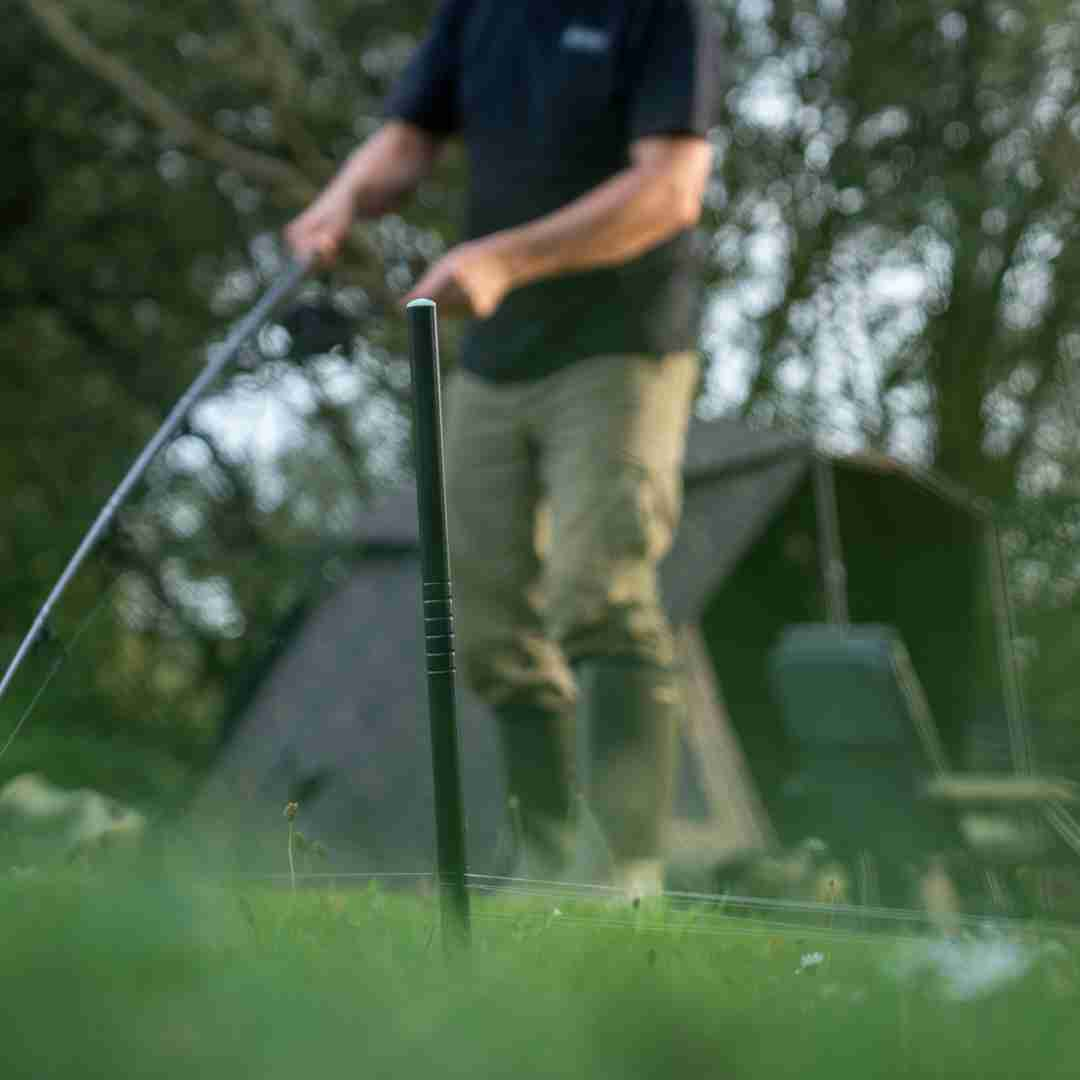

The angler then wraps their fishing line around the sticks a certain number of times to measure how far they are casting, enabling them to replicate the distance with each cast accurately.
Why Should I Use Distance Sticks?
The primary purpose of carp distance sticks is to ensure consistency and accuracy in casting. Whether baiting an area or trying to hit a specific spot in the water, knowing the exact distance of your cast is crucial. With distance sticks, anglers can standardise their casts, making it easier to target specific areas of water, especially those without visible features.
The Importance of Distance Sticks in Fishing
In fishing, success often depends on the precision of your cast. Distance sticks are vital for ensuring this precision, especially in environments lacking clear visual markers.
Why Accuracy Matters in Fishing
Accurate casting is essential for placing bait in areas where fish are likely to be found. In competitive fishing or when targeting specific species, missing the right spot by even a few yards can mean the difference between a catch and a missed opportunity.
Challenges of Distance Fishing
Fishing at a distance, especially in featureless waters, can turn casting into guesswork. Replicating the exact distance of a successful cast is often challenging, yet crucial for effective fishing.
Solving with Distance Sticks
Distance sticks provide a simple yet effective solution. They allow anglers to measure and consistently replicate casting distances. This consistency is invaluable, particularly when re-casting or adjusting strategies, ensuring the bait consistently reaches the targeted area.
How Distance Sticks Work
Once you know where you are fishing in your swim, know what spot you are standing to cast from and have a horizon marker, its then time to measure that perfect distance to that ideal fishing spot.
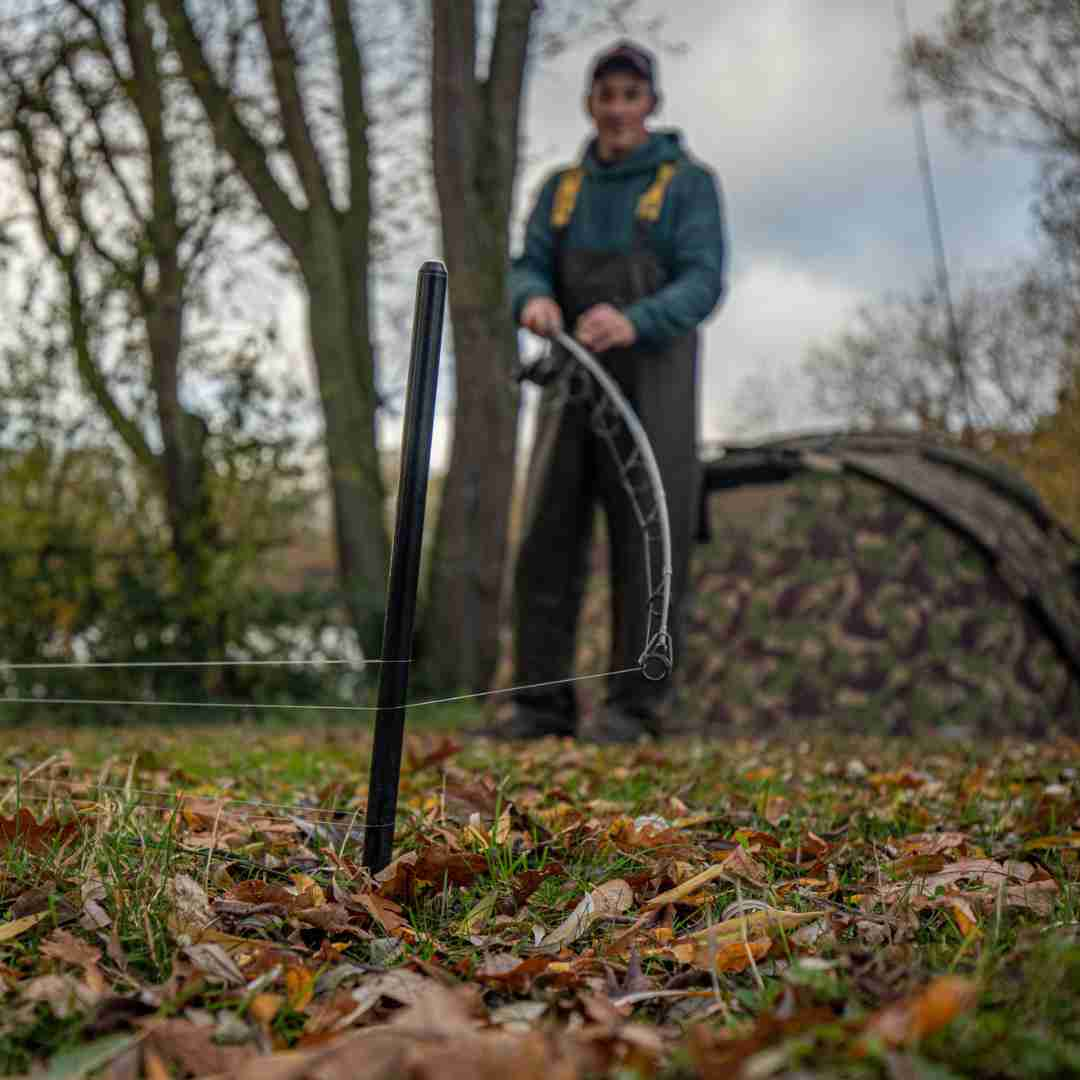

Distance sticks function as a pair of markers, typically banksticks, that you place a specific distance apart on the ground.
By wrapping your fishing line around these sticks and counting the number of wraps, you can accurately determine the distance of your cast.
How To Use Fishing Distance Sticks
Using distance sticks allows you to fish with precision and consistency, especially in waters where visual cues for distance are not available. This methodical approach ensures that each cast is as effective and targeted as possible.
1. Feel Your Lead Down: Cast your lead in your swim to see if you can find a comfortable place to fish on. You could search for a gravel bar to fish just in front of or a little bit of silt.
2. Attach Braid: Load your marker rod and spod reel up with braid as it has zero stretch, even when dragged across the debris of the lake bed. It also transmits the feeling of all the features of the swim to your hands.
3. Use the Line Clip: Put your line in the line clip on your reel but make sure your rod is out where you would finish in a cast and held at your preferred angler before selecting the exact spot to clip your line.
4. Reel In: Once your line is clipped in with your lead in the perfect spot, reel in the line. You can double-check your clipped line distance by casting out again.
5. Placement of Sticks: Lay your rod on some soft ground in your swim and plant a stick on either end of the rod (one butt end, one tip end). Some distance sticks have a piece of rod to help measure 12ft but if not, your 12ft rod shall suffice!
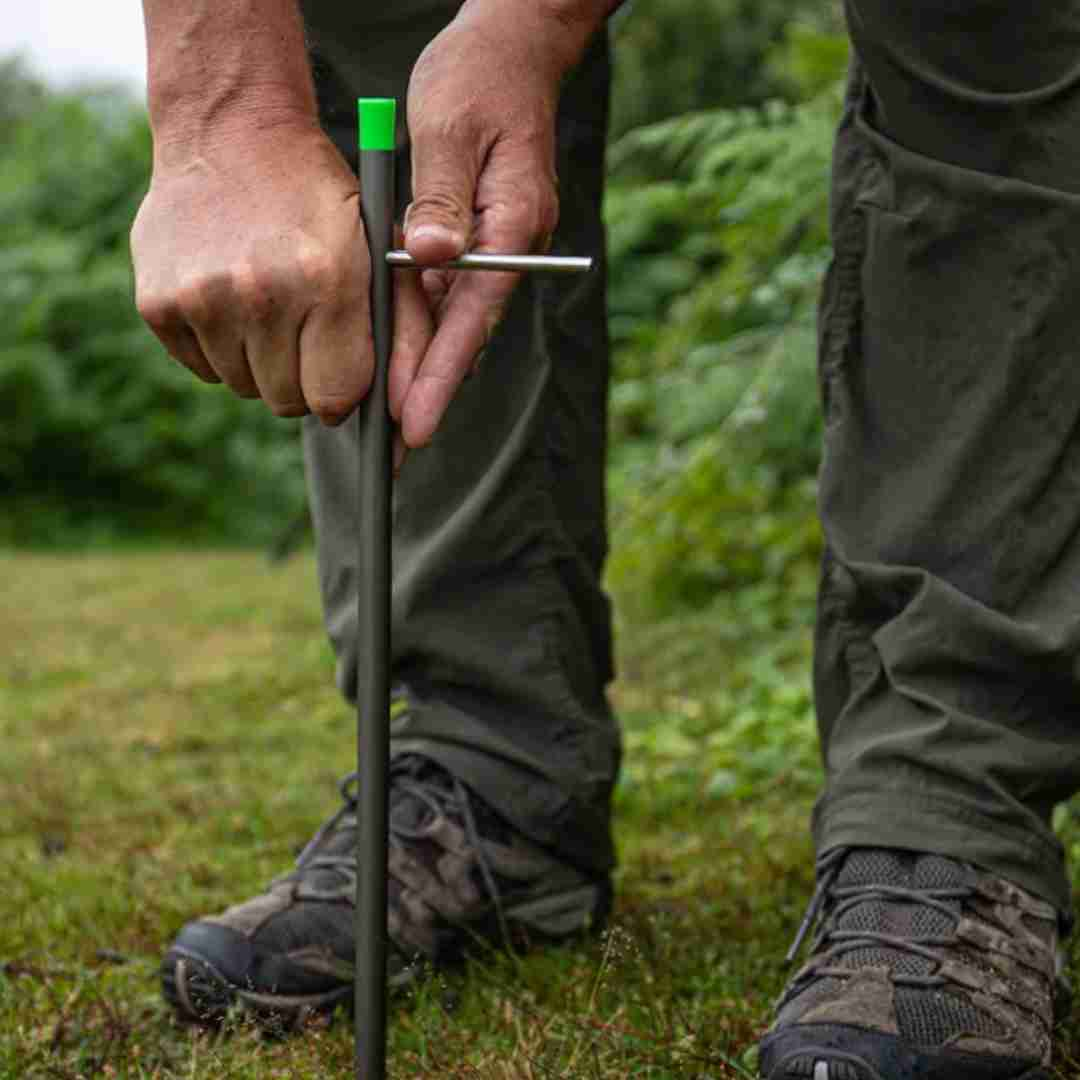

6. Wrap Your Sticks: Get your lead and wrap it round one of your sticks. Open the bail arm of your reel, with tension on your braid, start wrapping the braid in a figure of 8 around the sticks
7. Count Your Wraps: Be sure to count how many times you make a figure of 8 with your clipped amount of line. The number of wraps directly correlates with the distance you will be casting. Unwrap your marker rod and reel it back in.
8. Make A Note: Whether its on your phone or on paper, make some notes of how many wraps each of your rods has and what horizon marker each rod is casted towards. These notes could be used when fishing on future sessions.
9. Mark Up Your Fishing Rod: Use your main fishing rod and wrap it round the distance sticks. Wrap the same amount as your marker to get the same distance then clip the line on your main fishing reel.
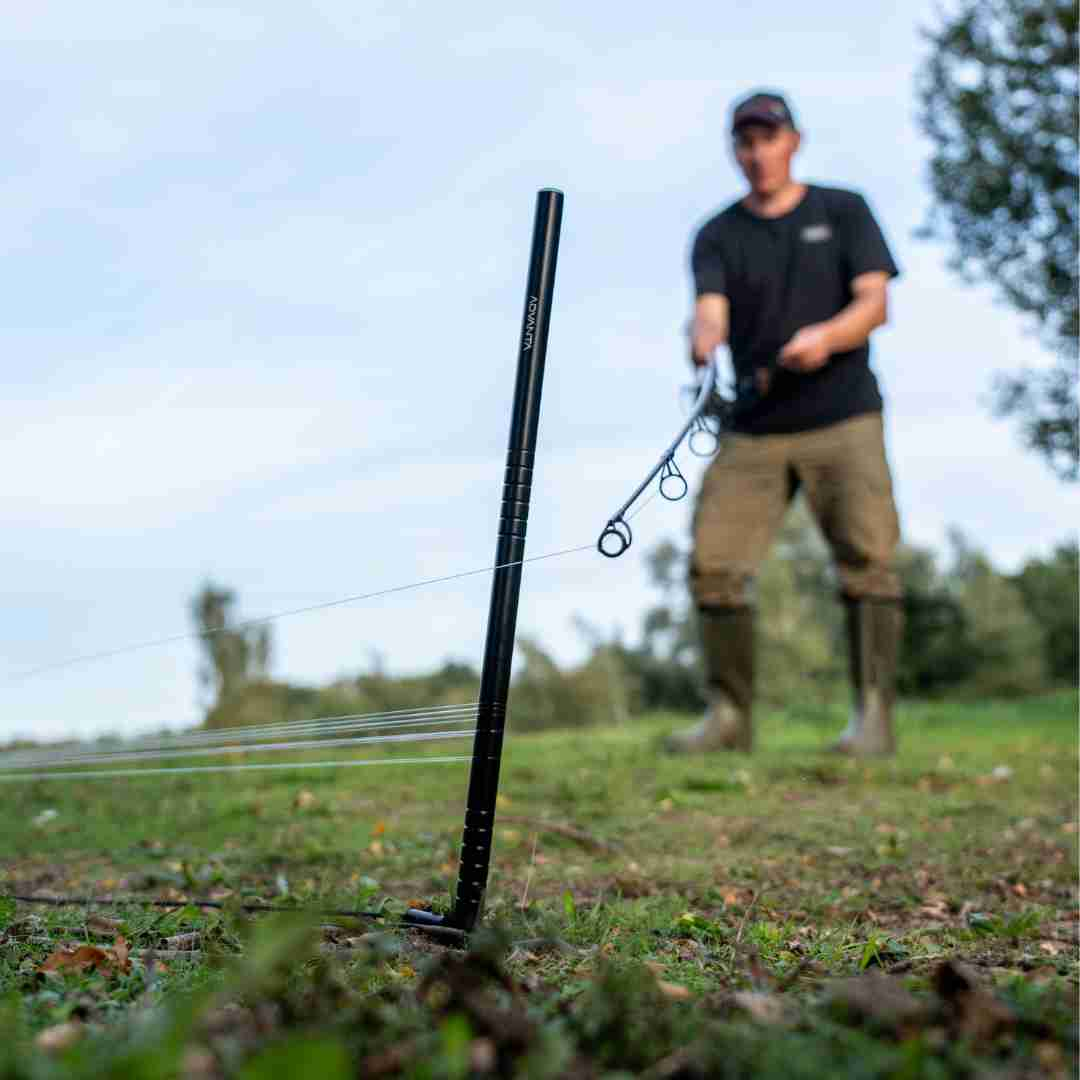

10. Get Fishing: Once you know the perfect distance for each of your fishing rods be sure to stand on the same spot, cast to that horizon marker, hit the clip and feel that lead down.
How do you use Korda distance sticks?
How far apart are distance sticks?
Anglers typically opt for setting their distance sticks at 12 feet apart, primarily because this distance matches the most common rod length. Additionally, 12 feet is exactly equivalent to 4 yards, making it a breeze to calculate your casting distance.
For instance, if you wrap your line around the sticks 10 times, you're casting out to a precise distance of 40 yards. If you're wrapping your line around sticks that set 12 feet apart 25 times, it will give you a neat 100 yards.
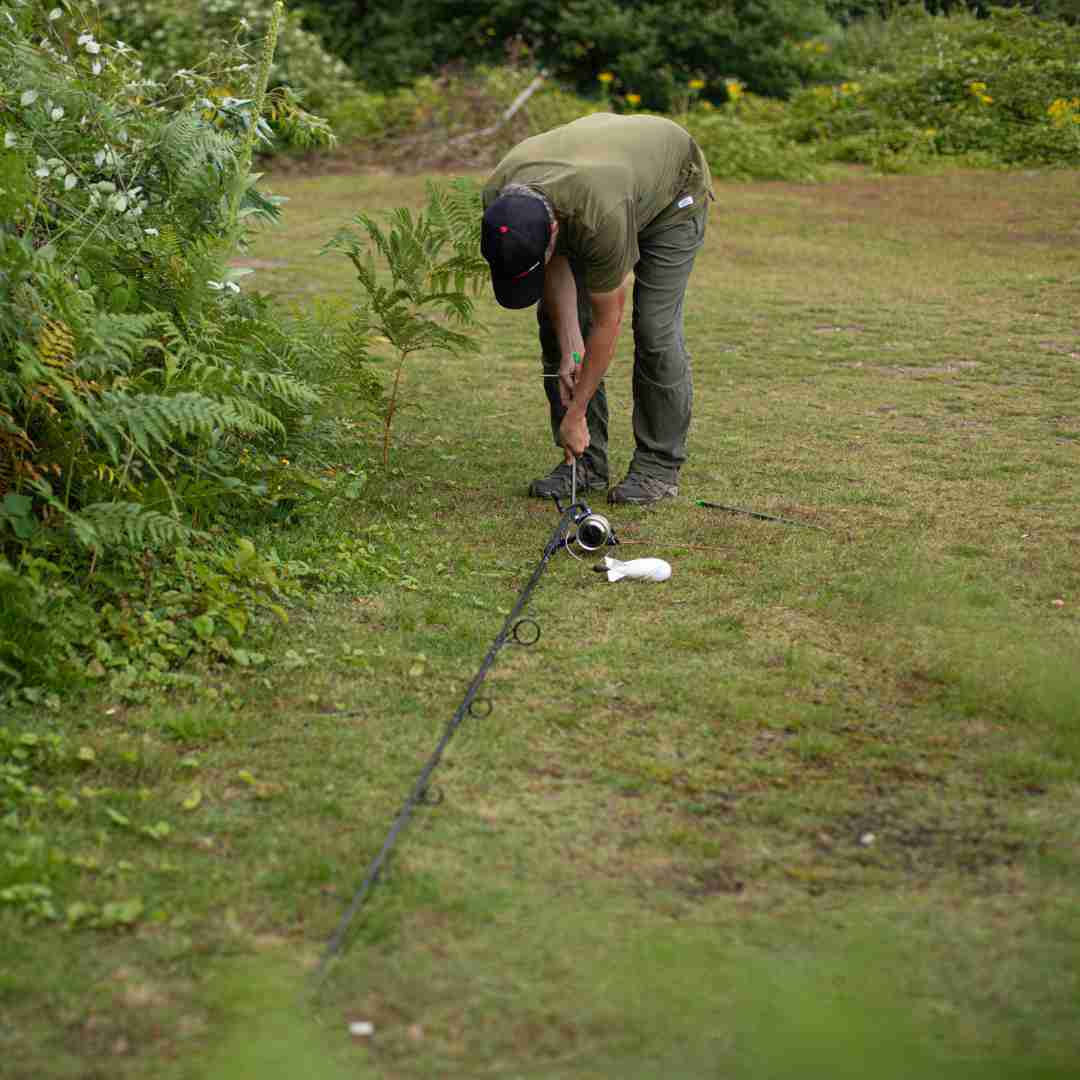

You can increase or decrease the distance between your sticks, but the calculation changes. For example, 25 wraps on 13ft distance between the sticks reach 108 yards and 1 foot, whereas 25 wraps on 10ft sticks cover 83 yards and 1 foot.
When it comes to setting up your distance sticks, you've got the freedom to choose any distance that suits your style. But remember, the key is consistency across all your rods during a session.
Practical Applications of Distance Sticks
Angling Direct team member, Chris Ansell shares his top tips and tricks to ensure you're carp fishing accurately at any distance with the help of distance sticks.
Distance Fishing Techniques and Tips
- Stand in the same spot for every cast. If you stand in a different place with your fishing rod, marker rod or spod rod, you defeat the point of using distance sticks for accuracy!
- Line Choice: Be sure to use braid on your marker rod to avoid stretching and allow all the feeling when marking out your swim. Use mono line on your fishing rod for better play with carp!
- Plant your sticks at a slight outward angle. This helps when the wrapped braid coming off and creating a lot of tangled mess!
- Adjustments: If you need to adjust your distance for any reason, simply re-wrap the line around the distance sticks to the new desired length and re-mark your line accordingly.
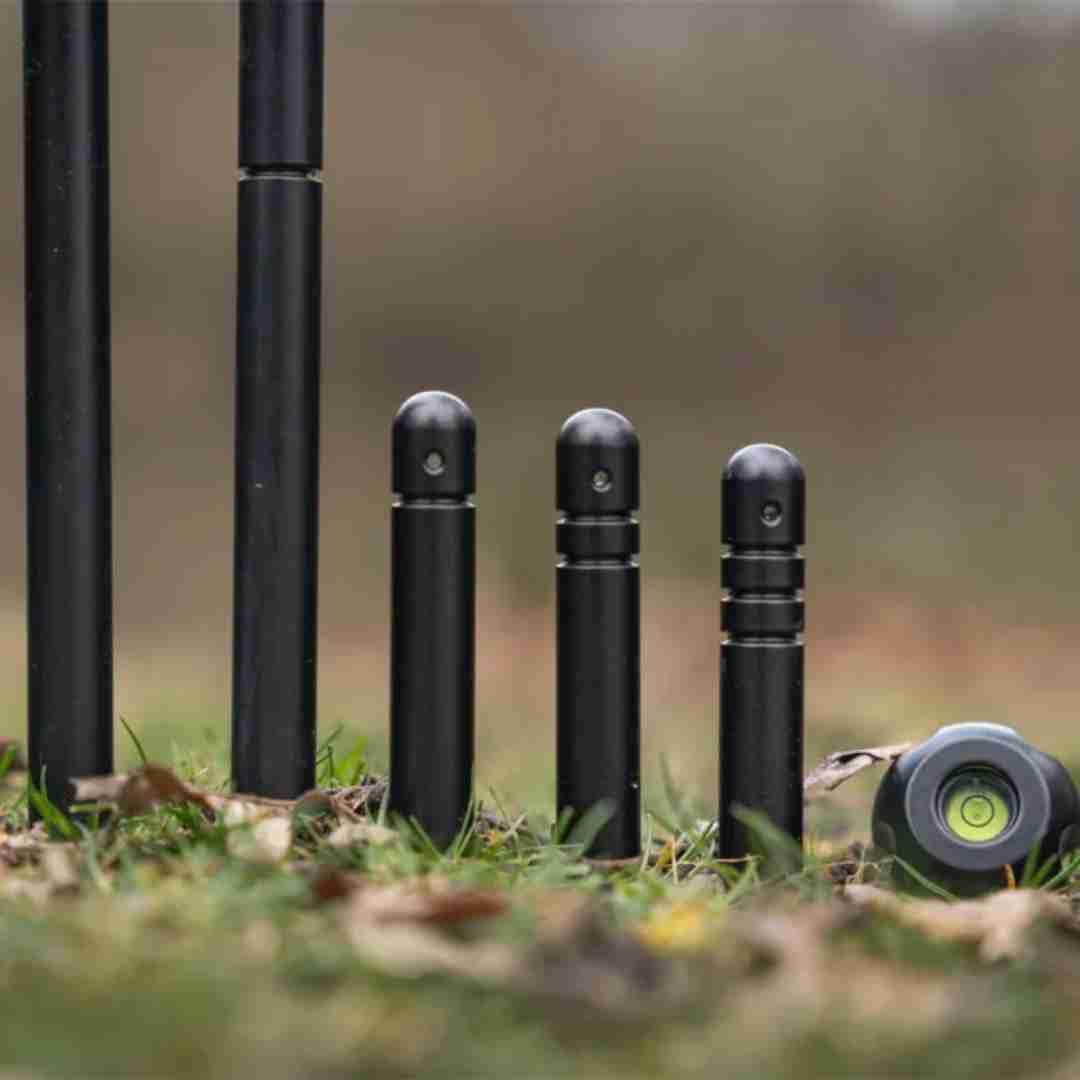

- Make a note of lake landmarks to cast towards like a certain bush or tree or island. A horizon marker like a tall tree is best as when it goes dark you can still see it unlike a certain swim or another anglers bivvy.
- Use Figure of 8: When wrapping your line on the sticks, be sure to use a figure of 8 and to wrap under tension the whole time.
- Marker to Spod Rod: When done marking up and counting wraps with your marker rod, switch the lead out for a spod rocket so you can accurately put bait over your rig. You will need to re-wrap the braid to a shorter length so you don’t cast bait further than the rig.
- Measuring Spodding Distance: Remember to clip your rods at the same distance as your spod rod, taking into account the depth of the water and adding that distance. This ensures that when you cast, your lead and hookbait will follow an arc trajectory and land directly beneath the spot where your spod has been hitting the water's surface.
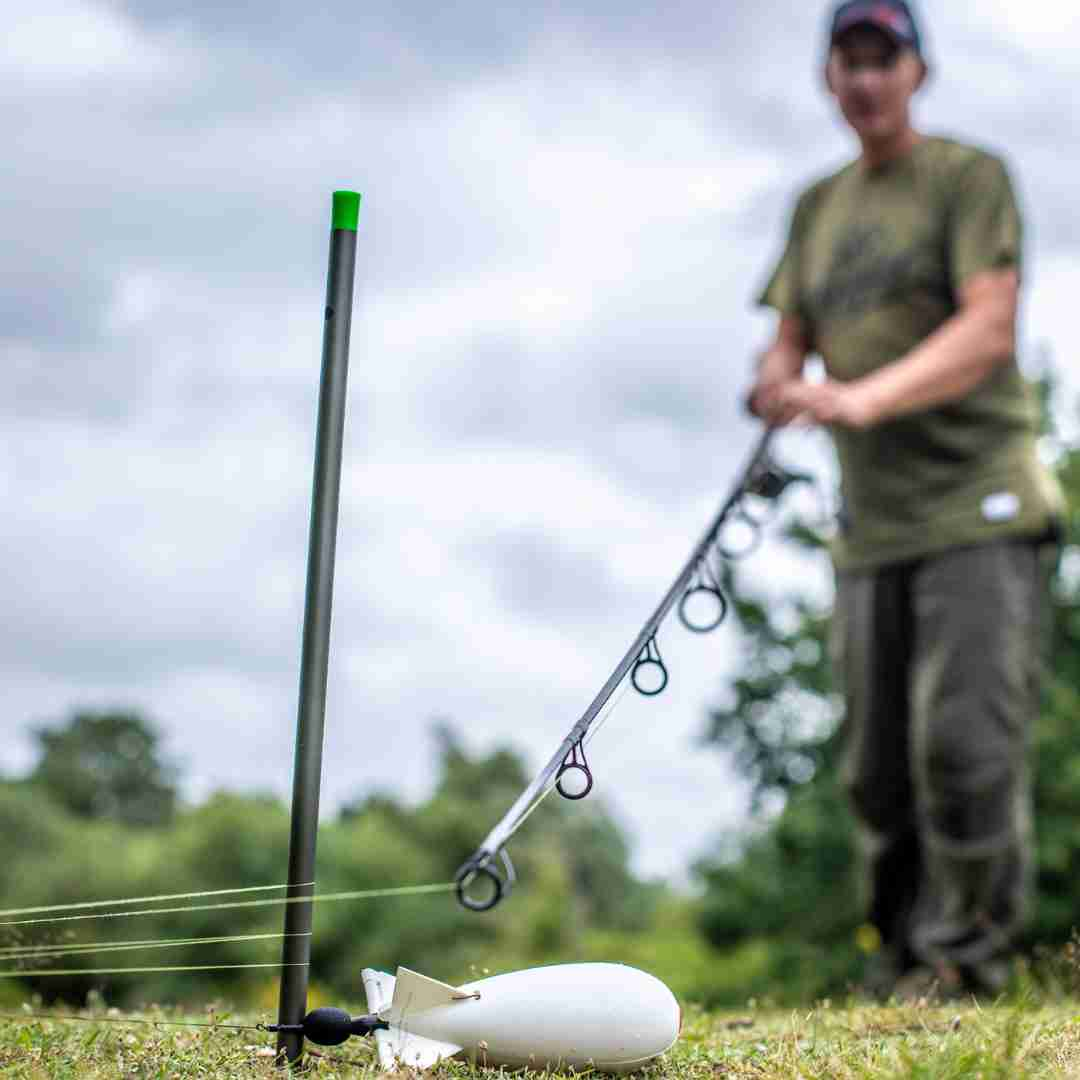

Choosing the Best Distance Sticks for Fishing
When selecting the ideal distance sticks for your fishing needs, there are several key factors to consider. Additionally, the right choice may vary depending on the specific angling scenario.
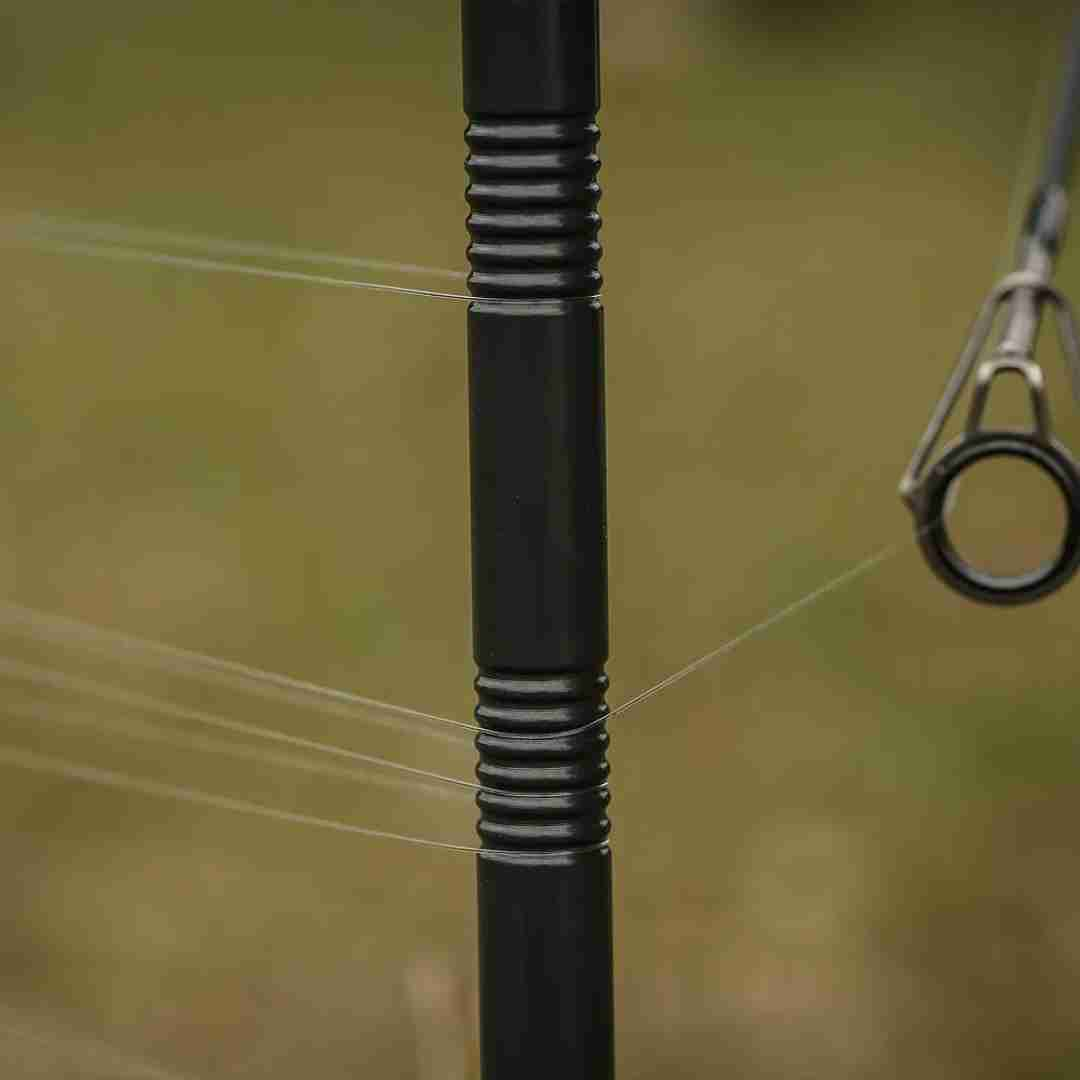

1. Material and Durability: Look for distance sticks made from sturdy materials like stainless steel, carbon fibre, or high-grade aluminium. These materials ensure longevity and resistance to weather and wear.
2. Visibility Features: Consider sticks with visibility aids such as high-visibility tips or glow-in-the-dark markings, especially useful for night fishing or in low-light conditions.
3. Adjustability and Portability: Adjustable length can be a valuable feature, allowing for flexibility in different fishing conditions. Compact, easily portable sticks are also beneficial for anglers who travel frequently.
4. Ease of Use: Simple design with clear measurement markings can make your fishing experience more efficient. Some distance sticks come with built-in features like a measuring tape or cord, which can be handy.
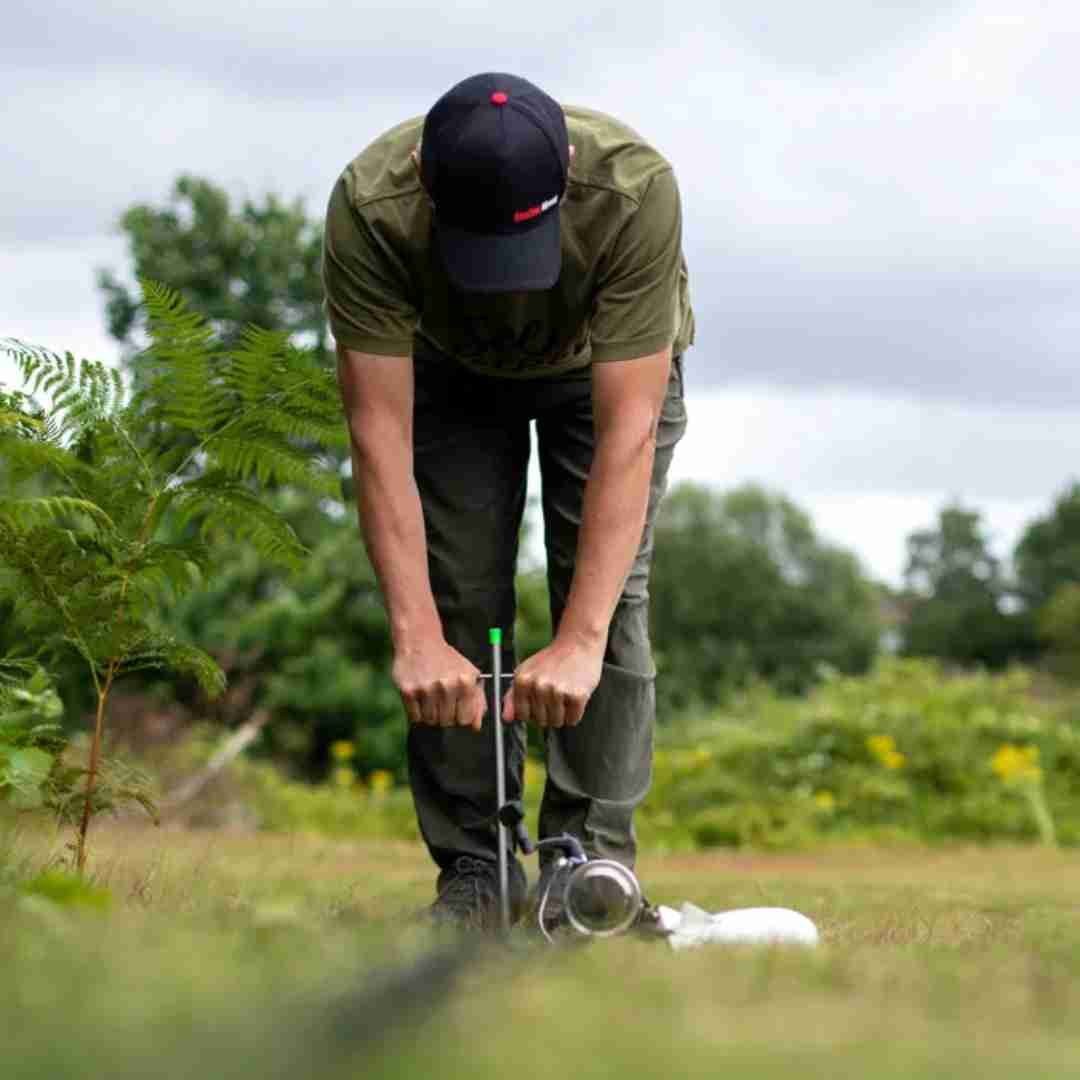

5. Stability and Ground Compatibility: Ensure the sticks can be securely planted in various ground types, from soft mud to harder, gravelly surfaces.
When To Use Distance Fishing Sticks
1. Carp Fishing: For carp fishing, where precision is crucial, opt for robust, high-visibility distance sticks with precise measurement markings. Durability is key due to the frequent casting involved.
2. Beach or Shore Fishing: In these scenarios, choose distance sticks with strong ground penetration capabilities and resistance to corrosion, as they will often be used in sandy and wet conditions.
3. Freshwater River Fishing: Look for lightweight, portable sticks, as mobility can be crucial in river fishing. Adjustable sticks can be beneficial to accommodate varying river widths and casting distances.
4. Night Fishing: Select distance sticks with enhanced visibility features like glow-in-the-dark tips or reflective materials to ensure ease of use during nighttime.
Distance sticks are a game-changer in the realm of fishing, providing unparalleled accuracy and consistency in casting. They enable anglers to precisely measure and replicate casting distances, ensuring bait and lures are placed exactly where needed.
This tool is especially valuable in waters without clear landmarks or in competitive scenarios where precision is key. By integrating distance sticks into their fishing practices, anglers of all levels can enhance their efficiency and effectiveness, elevating their fishing experience to new heights.
